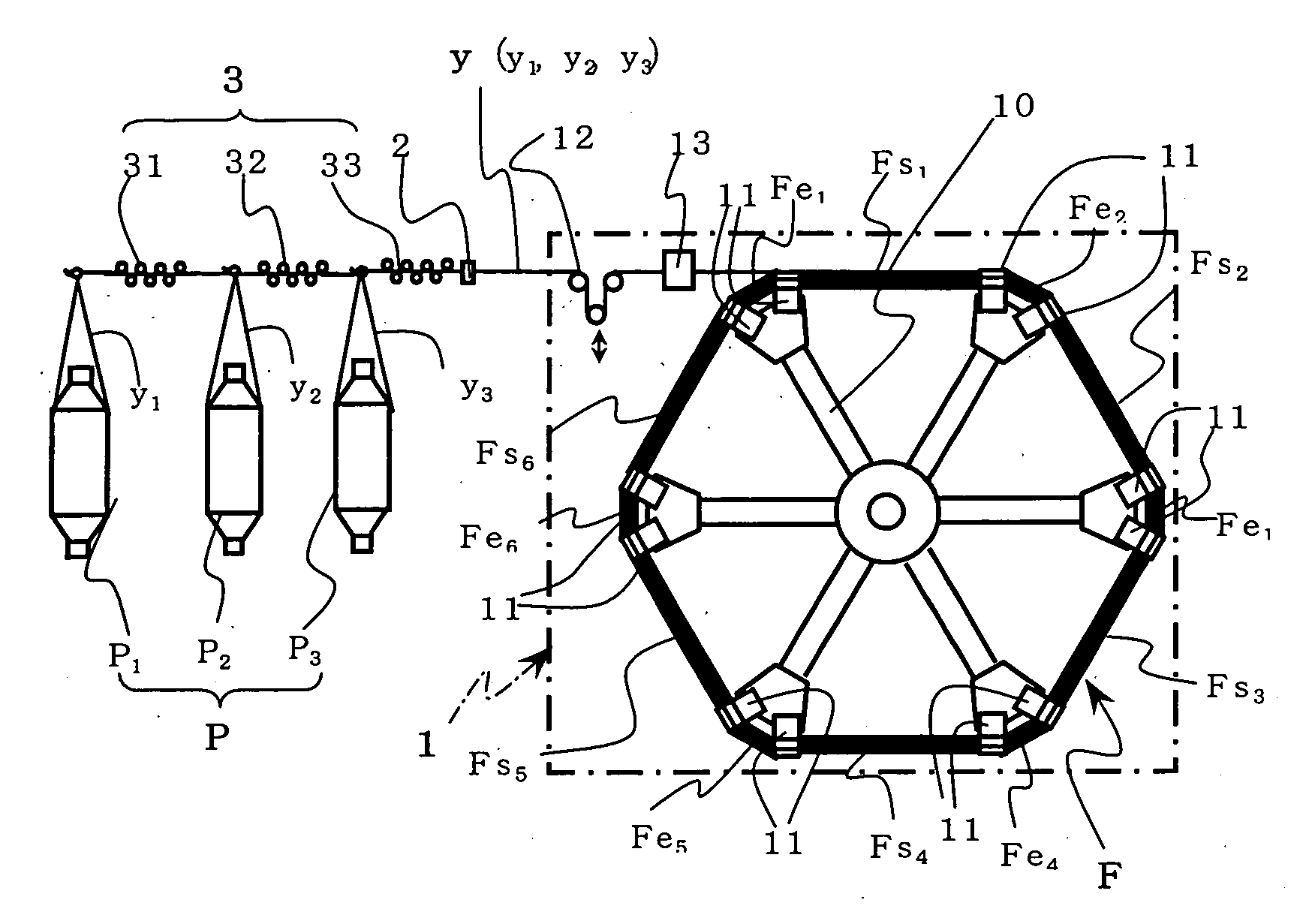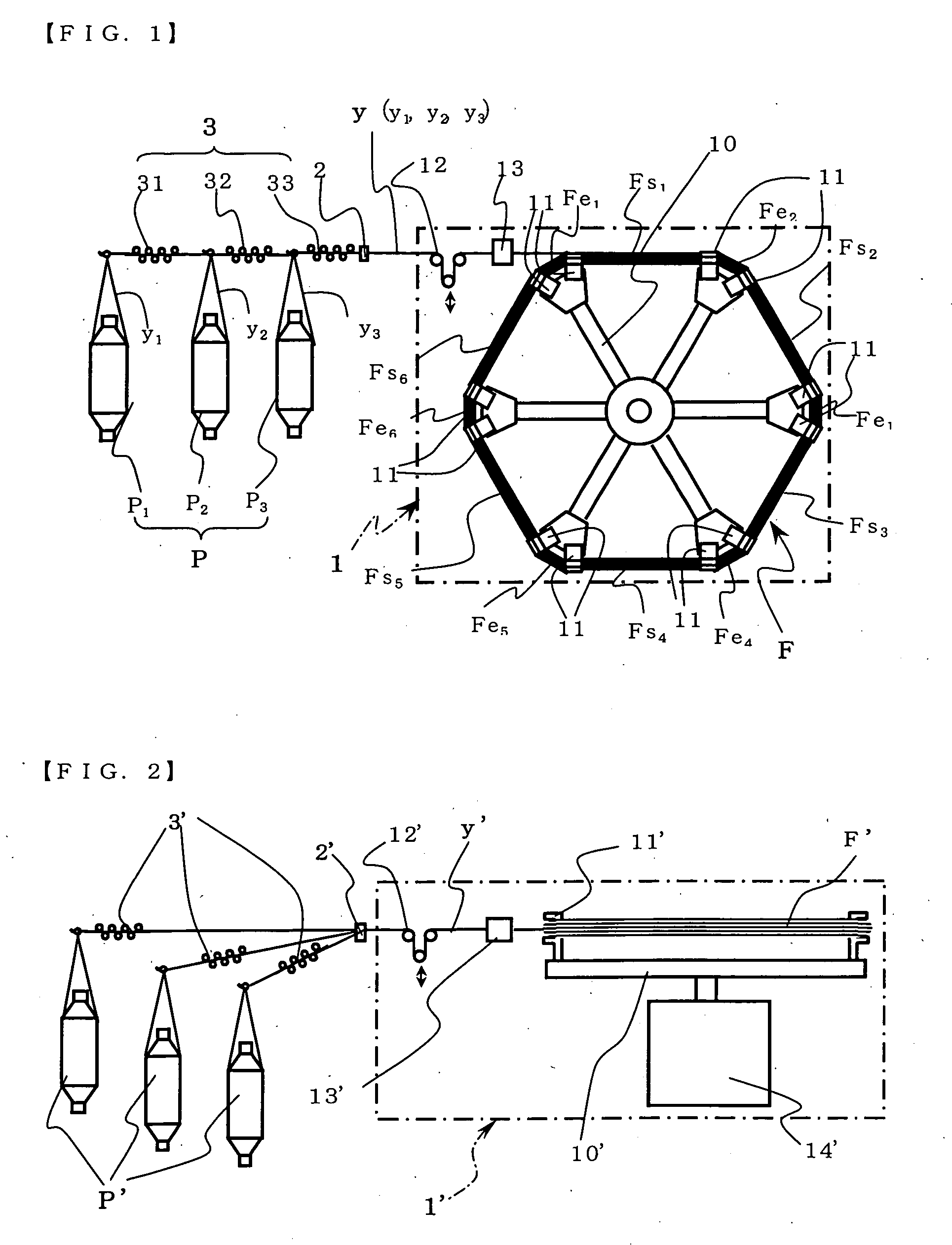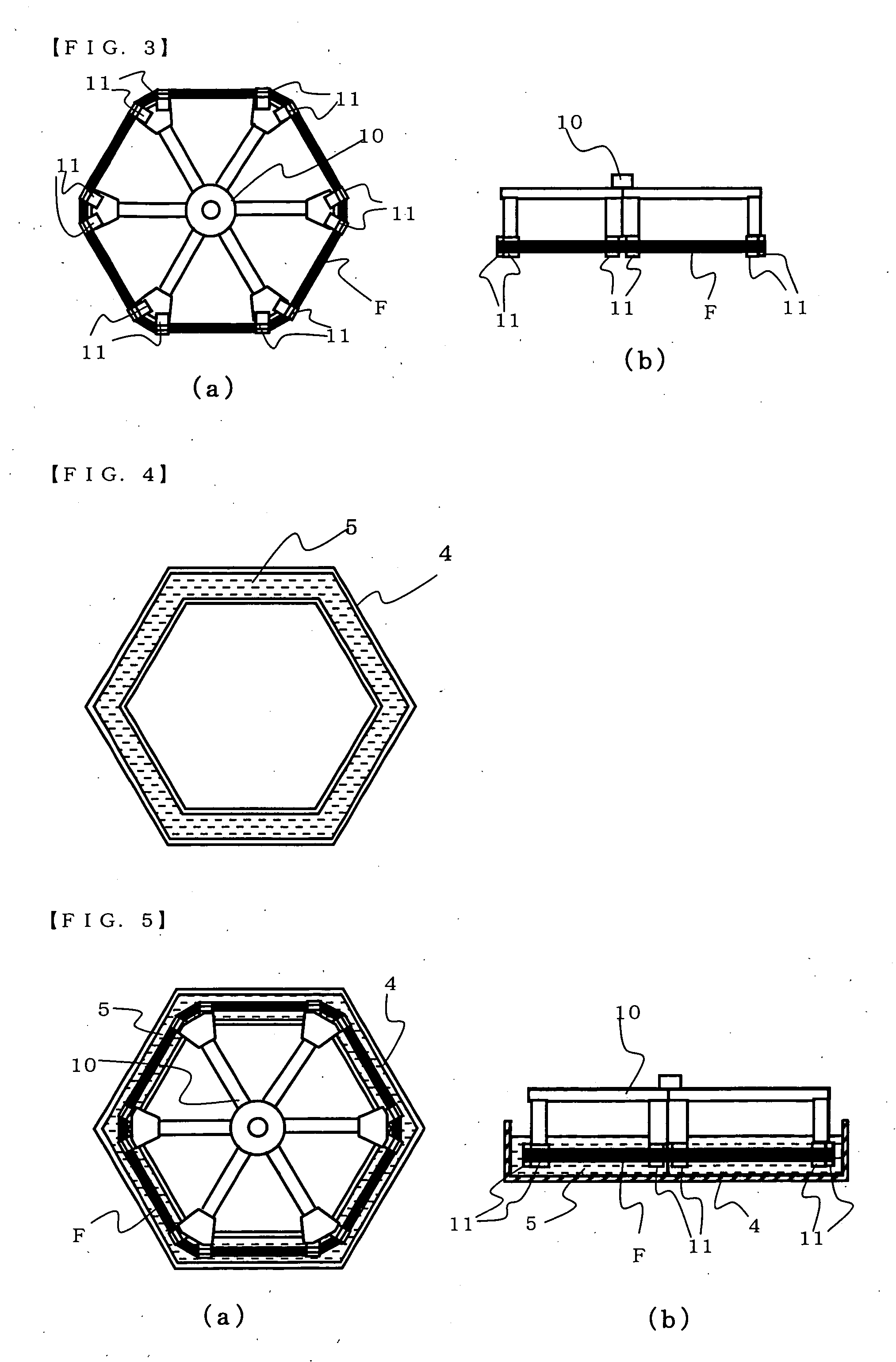Method and device for manufacturing extremely short fiber
a technology of ultrashort fibers and fiber bundles, which is applied in the direction of severing fibres, fiber treatment, textiles and paper, etc., can solve the problems of shaven fiber bundles, difficult to properly cut filaments to a very short length of no more than 0.1 mm at a satisfactory yield, etc., to prevent residual air bubbles from water, reduce pressure, and remove
- Summary
- Abstract
- Description
- Claims
- Application Information
AI Technical Summary
Benefits of technology
Problems solved by technology
Method used
Image
Examples
first embodiment
[0046] According to the present invention, this problem is solved by, as a first embodiment, preparing one or more wound yarns which are formed by winding up the multifilament yarns composed of numerous individual filament groups. The yarns are drawn out from the wound yarns and lap wound on a winding reel such as, for example, a known coiling reel while applying a prescribed tension, to obtain a paralleled fiber bundle. Next, the fiber bundle obtained in this manner is embedded without being removed from the winding reel and while applying the same tension as during winding, so that the tension-applied fiber bundle is embedded and integrated in the embedding material.
second embodiment
[0047] Alternatively, as the invention, both ends of the fiber bundle, which was formed by lap winding the numerous yarns and was wound up in parallel, are completely bound with the same tension applied as during winding. In this case, the binding of both ends of the fiber bundle may be accomplished by wrapping the periphery of the aforementioned ends with adhesive tape to prevent the individual filament groups of the fiber bundle from moving freely, or by holding them with the strong force of a clamp. Also, an adhesive may be impregnated into only the end sections to adhesively anchor together the individual filaments of the fiber bundle.
[0048] In this case, unlike the first embodiment, removal from the reel can be accomplished by cutting the tape section anchoring both ends of the fiber bundle, or the adhesively anchored sections. For the removal, if a fixture such as a stretcher is mounted in order to hold both ends of the fiber bundle and allow the tension-applied state to be ob...
PUM
| Property | Measurement | Unit |
|---|---|---|
| lengths | aaaaa | aaaaa |
| infiltration distance | aaaaa | aaaaa |
| pressure | aaaaa | aaaaa |
Abstract
Description
Claims
Application Information
 Login to View More
Login to View More - R&D
- Intellectual Property
- Life Sciences
- Materials
- Tech Scout
- Unparalleled Data Quality
- Higher Quality Content
- 60% Fewer Hallucinations
Browse by: Latest US Patents, China's latest patents, Technical Efficacy Thesaurus, Application Domain, Technology Topic, Popular Technical Reports.
© 2025 PatSnap. All rights reserved.Legal|Privacy policy|Modern Slavery Act Transparency Statement|Sitemap|About US| Contact US: help@patsnap.com



